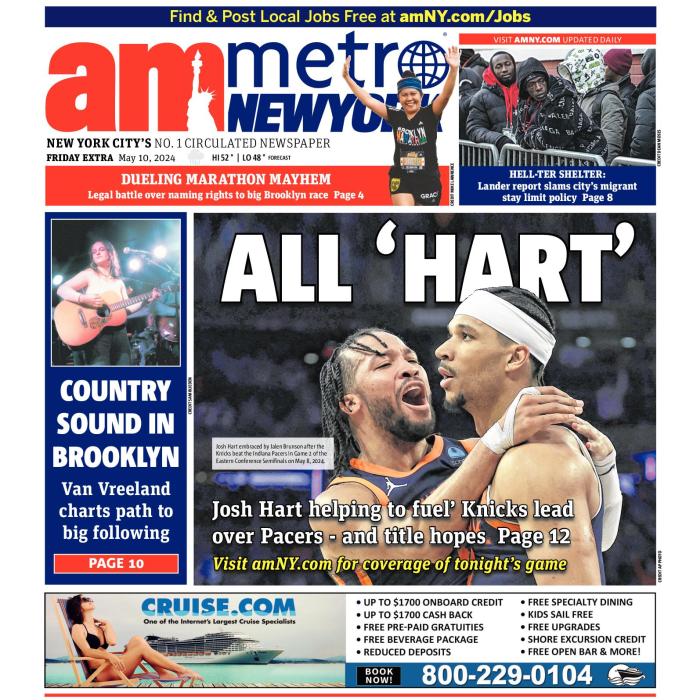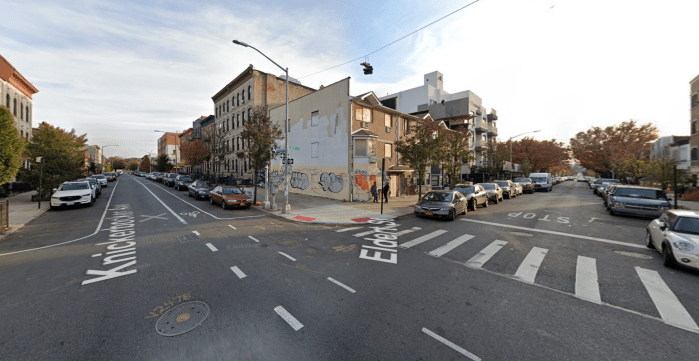By Julie Shapiro
By this time next year, it may be possible to play miniature golf several hundred feet out in the Hudson River.
The venue will be Pier 25, near N. Moore St., where Manhattan Youth once ran programs before the pier was demolished and rebuilt. The pier, which was closed in 2005 for construction, will likely reopen at the beginning of October 2010 with the mini-golf course, along with sand volleyball courts and the largest playground in Hudson River Park, H.R.P. Trust President Connie Fishman said last week.
Already, the glinting, angled roof of the mini-golf building is visible from the mainland. The Trust most recently predicted that Pier 25 would open at the end of 2010, and that’s still what the contract says, but Fishman said the work is moving more quickly than expected.
The uplands area to the south of the pier, which includes a skate park and a landscaped path, will also open next fall, Fishman said.
Last year, the Trust opened a much-acclaimed section of the park mostly in northern Tribeca, between Laight St. and Pier 40. Now that work on the southern section of Tribeca is moving along, the only uncertainty left is what will happen to the middle piece, between N. Moore and Laight Sts.
The question is particularly urgent to some members of the Hudson River Park Advisory Council, who are worried about recent accidents between cyclists and pedestrians on that stretch of the shared bike path and walkway. Strollers exiting the completed piece of the park at Laight St. sometimes don’t realize they are stepping into a veritable highway of bikes as they try to continue southward, and confrontations ensue.
On a recent afternoon, several bike commuters swerved to avoid a cadre of teenagers who were ambling along the path’s middle line. “Watch your back!” one of the cyclists yelled as he whizzed past.
The advisory council is working with Transportation Alternatives, a cycling advocacy group, to draft safety recommendations, said Arthur Schwartz, chairperson of the advisory council.
“It is crucial that we use education outreach to create safety awareness and install effective signage to mitigate the small but significant number of aggressive bike riders in conflict with park pedestrians,” Marc Ameruso, vice chairperson of the advisory council, said in an e-mail.
Fishman said she is looking into installing more signs on the shared path, but any changes have to go through the State Dept. of Transportation, which controls the path.
The true solution to the problem will come when the Trust completes that section of the park, which will have a separate bike path and walkway. The construction depends partly on work at Pier 26, where the Trust plans to start building a boathouse and food concession next spring using the $6 million each that the state and city allocated in this year’s budget.
If there is enough money left over, the Trust could also start building the upland area and dog run just north of the pier, but if not, that portion of the park will have to wait for the next budget cycle. One advantage of the poor economy is that construction prices are down, which could enable the Trust to build more of the park with the $12 million, Fishman said.
Also planned for Pier 26 is an estuarium, or maritime education center, but it does not have much funding or a design. The boathouse and concession will be at the base of the pier, so they could open before the other features, which could come later.
On Pier 25, the Trust initially planned for a themed miniature golf course, but for now it will just have landscaping, with water and green features.
“In a funny way, it’ll look like the park,” Fishman said.
If people want extra themed features, they could be added later, she said. The Trust has not decided on an operator for the course or the pier’s other features. One possibility to celebrate the opening of the pier next fall is a miniature golf tournament.
Julie@DowntownExpress.com
















